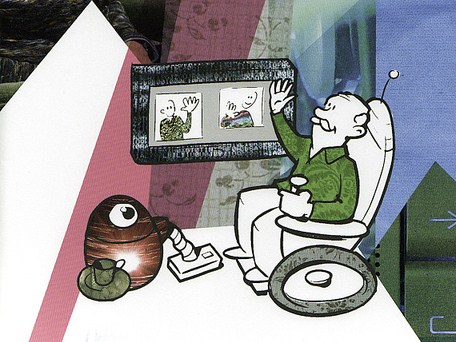Summary: VSee user Dr. Russell E. Brown shares how VSee has helped him successfully practice telepsychiatry.
Last week I got to speak with neurologist and psychiatrist, Dr. Russell E. Brown from Atlanta, Georgia. He is the Program Director of Avenia Behavioral Management and works with elderly patients suffering from such issues as Alzheimer’s and dementia. As a physician who provides care to patients at various clinics, Dr. Brown has enthusiastically embraced the use of VSee in his practice. It allows him to fill prescriptions without having to be there in person, and more importantly, he can greatly expand the number of clinics he can work with!
Me: What differences has VSee made in your practice?
Dr. Brown: Time-management and convenience. That’s really been the main difference. Most of the clinics are 4 hour clinics, so in the middle of the day you just have to leave and go someplace else. I usually go to 2 clinics each day–9 to 1 at one clinic and then another one from about 3 to 7. Between getting lunch and having to drive an hour, you can burn up 2 to 3 hours in the middle of the day, and in that time you may be able to see 1 or 2 new patients.
Certain clinics may not even have 4 hour clinics. They may only have 2 hours, so you’re going from point A, another hour, point B, another hour, point C…and what this tool allows you to do is eliminate a lot of that dead space. You can just flip from one environment into another without having that hour of down time and that allows you a lot more efficiency.
Me: What are the direct cost benefits of using VSee or do you feel that the benefits are mostly intangibles?
Dr. Brown: I’m able to get to a lot of rural environments like Savannah and Augusta (I do those primarily on the weekends and sometimes during the week), so I can expand my business across the state, and that’s an enormous absolute benefit. Even just staying in Atlanta, there is a cost benefit. You pay 40 to 50 dollars for a [VSee] license, and you may spend that much in a week on gas so that’s at least 300% or 400% savings in cost. Then in terms of wear and tear on the car, and the ability to have an extra hour of clinic time, it becomes a no brainer.
Me: How many video conferencing units do you use?
Dr. Brown: We’ve got VSee in about 10 different environments and we’ll probably grow that a little more in the next 6 months.
Me: Have you tried using other videoconferencing services before?
Dr. Brown: We tried Polycom before and had a lot of trouble. It just wasn’t as easy to use, and it didn’t offer the “collaborative documentation” capabilites benefit. What I say “collaborative documentation” I mean that if I have a nurse on the other side, he or she can actually start filling in some of the data on my progress report–patient data, history–as I’m talking. It allows for true collaboration in documentation where everybody can contribute to the construction of a patient’s medical record. Even the patient can fill in their own data if they’re confident. Then all I have to do is write the plan and sign off and it’s all right there. I can e-mail it to them or give it to them across the screen
Me: Thanks Dr. Brown for your time and sharing how much VSee has made a difference for you!
If you have a VSee story you’d like to share, please tell us! You can comment below or send us a note. We’d love to hear from you!
Follow us on Twitter (@VSee) and Like us on Facebook to hear about the latest from VSee! By the way, we are hiring too.
photo courtesy to Cea





Are there any pricing strategies based on the particular “market usage” and have you ever worked with utilization-based pricing, particularly to attract new customers?
Hi Cal. Right now for virtual doctor visits, if you look at services like MDLIVE, American Well, Teledoc…most of them seem to charge $35-50 per consultation. I’ve noticed that some services also require a separate one-time registration fee. Others ask a regular monthly fee, but then charge less per doctor consultation or include a certain number of consultations. I’m not sure whether specialist consultations are charged any differently.
in a team approach, to meet your therapeutic goals. PACT stands for Psychiatric Addictive Curative Therapies. As our name implies, we form a PACT with each of our clients to work together to achieve our mutual goals.
Our office is a multidisciplinary mental health practice that seeks to meet your individual needs. We currently have multiple Psychiatrists, Psychologists, Nurse Practitioners, Physician’s Assistants, Licensed Practical Counselors and Social Workers available that work together,